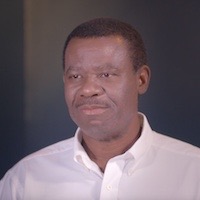Category Archives: Boosting Creativity, Productivity & Effectiveness
Feel Like You’re Spinning Your Wheels? How to Get Unstuck
Have you ever had a really hard time getting something done? Something big?
When you are up against a large task or project, it’s easy to become overwhelmed by the details and the magnitude of what is before you. Sometimes it hard to know where to start, and once you do it can feel like a never-ending process. To make matters worse, when the project you are working on necessitates that you do something new—something uncomfortable and challenging—it often elicits fear, frustration, and anxiety. All of these things can keep you feeling stuck.
In a state of overwhelm, the focus goes from the joy of getting something done to the aggravation of having something undone.
We can become mechanized in our attempts to figure out what needs to get done and exactly how to go about it. We may also put a lot of pressure on ourselves and beat ourselves up for things we haven’t done, rather than recognizing and acknowledging ourselves for what we have done.
In what is often an unconscious attempt to regain a sense of control, we are easily lulled into doing things that we know will be easier and potentially more enjoyable.
Some tasks don’t really need to get done right now (or ever) or should really be delegated to others, but we often prefer those. Some of the time-wasters we get sucked into include surfing the web, making idle conversation, cleaning out your inbox, or—my personal favorite—making more lists of everything we think needs to get done and identifying all the steps we need to take. This is actually a great thing to do when you’re focused, but, in a procrastination mode, it becomes to planning to plan—and then plan some more—until you have a rock solid strategy that you never actually execute.
It may feel like you are spinning your wheels—running like hell and just not getting anywhere.
I know this, of course, because I have been there. Repeatedly. And I’ve worked with others who fall into this pattern, as well, to stop the madness by recognizing what’s happening and making a shift to get back on a road that leads them where they need to go.
One of the most powerful things I have found for breaking out of a “spinning your wheels” cycle is to take some time to revisit your purpose—or the larger mission or goal behind what you are doing.
- Get clear about what—or who—the work is for.
- Identify how it will improve the quality of life for yourself or those around you.
- Reflect on the degree to which it will help people, contribute to something greater, or allow you to achieve a meaningful goal for yourself.
This doesn’t have to take hours and hours. Just pause for a few moments and ask, when this project/task/ initiative is finished, what larger goal or purpose will it accomplish? What would you like to accomplish? Write it down. Add to it as you think of additional bonuses. Then, sit for a moment and see if you can envision what it would feel like to satisfy that larger purpose, vision or goal. See if you can feel it so clearly that you are actually grateful for it.
This simple act will help you reconnect with something inside you that will propel you beyond the minutia. It will give you the courage and strength to walk through your fear or resistance to do something that you may not be so good at yet. And it will help you to get back to the joy that comes through the process as well as the attainment of the end goal.
When you approach things in this manner, all that you do will be instilled with a new energy—one that uplifts, delights, and inspires.
Whatever you experience as you work on a project will be the same thing people will feel when they partake of the fruit of your efforts. The more we remember this, the more we will experience the satisfaction and gratification of having done something truly meaningful—something that lifts us out of the humdrum and into a place of brilliance. And all who come into contact with our work will be better off because of it.
Interested in additional strategies and practices for getting out of overwhelm so you can have more traction, make a greater impact, and infuse more life and meaning into your work? Check out The Pinocchio Principle Unleashed: The Real Leader’s Guide to Unleashing the Freedom & Flow of Your Authentic Genius.
3 Steps for Escaping the Hamster Wheel to Create Freedom & Flow

Do you find yourself running from one thing to the next with little time to really think about what you are doing and why?
If you answered yes, you are not alone.
Many high achieving professionals feel as though they have way more to do than they have time to do it. Their ambition, drive and passion have served them well, and gotten them to a nice place, but still they know they are capable of more. More visibility, more opportunity, more income, and dare I say – more freedom to enjoy their careers and their lives.
The daily grind has a way of keeping us tethered to the ground, feeling as though our best is just around the corner, if only we can get through what’s in front of us, which is often an accumulation of projects, events and other commitments that ends up growing far faster than it shrinks. Every once in a while, it becomes apparent that something’s got to give.
But who has time to slow down when there is so much more to get done?
The fantasy many of us have bought into is that if we just work longer and harder, we will get there. And despite our longing to find balance and the sweet spot that will finally allow us to relax and be more effective, we often act in ways that bring greater levels of anxiety and toil. As leaders, we also unwittingly create entire cultures of people who emulate our frenetic behavior in the name of getting ahead.
The hamster in the wheel doesn’t realize he isn’t getting anywhere.
And before he can, he must realize that he is, in fact, in a wheel. Our wheels are much more sophisticated and deceiving than those of the hamster. Because initially, our wheels do get us somewhere. It’s just that over time, they lose traction and become stuck in comfortable ruts. And we don’t realize when we’re stuck, because it doesn’t seem possible to be standing still when you are running like hell.
Are you ready to stop the madness and take things up a notch?
Can you conceive of finding a better way to do things? How badly do you want it? Bad enough to try something that goes against every compulsion you currently have to keep doing what you’ve been doing all along?
Consider the prerequisite for successful change.
Have you ever noticed that when you upgrade software, the program often needs to uninstall or extract something before it can successfully run? Gardeners know that new blossoms proliferate when the old flowers and branches have been pruned. Bargain shoppers know that stores sell older merchandise at a significant discount to get it off the shelves to make room for what’s coming in the new season.
How about you?
What tried and true ways of doing things have lost their leverage?
How willing are you to recognize that perhaps there is a better way of doing things than what you’ve done up to this point? All change begins with awareness that is coupled with desire. To move beyond your madness, try the following:
- Pay attention to the times during the day that you feel the most anxious, stressed, or tense. Recognize the pattern of thought or behavior you are engaging in that may be causing this discomfort. This may be a prime area for you to make a shift.
- Ask yourself some discerning questions such as, “What small, but powerful change could I make today that would allow me to be more effective and make the most of my opportunities?”
- Notice what catches your attention in the coming days. The answers to your questions will reveal themselves to you, but you must open yourself up to them and be willing to listen.
Once you begin to notice that the patterns and triggers that create the highest degree of anxiety, stress and pressure – and the impact they are having in your life, they begin to lose their hold on you. When you open yourself to new ways of doing things, you move from a point of view to a higher viewing point – one that allows you to see solutions that may have previously evaded you. Allowing yourself to envision and believe in a new way of doing things will transform your frustration into fuel and help you summon the courage you need to overcome obstacles along the way.
If you are interested in specific strategies for breaking through old habits and patterns that no longer serve you so that you can create more freedom and flow in your work and your life, check out The Pinocchio Principle Unleashed: The Real Leader’s Guide to Unleashing the Freedom & Flow of Your Authentic Genius that is coming soon! Registration will be limited to 25 people, and I’m in the process of hand selecting participants. If you would like to schedule a complimentary consultation call to see if you (and/or others from your organization) are a good fit, contact support@DianeBolden.com.
Living the Dream

NOTE FROM DIANE…
Last week I did a Facebook Live video on how to overcome the three biggest obstacles to achieving your intentions, visions and goals. The below article elaborates on some of the points I made in that video. If you haven’t had a chance to see the Facebook Live, I encourage you to check it out. It’s only my second one – something I’ve been inspired to do as a way of fulfilling my own personal vision for 2019.
Stay tuned (or subscribe) for more, and scroll to the end of this message for a time sensitive opportunity to work directly with me in an exclusive program that will kick off in April. Now for today’s article…
What do you find easier – dreaming big, or finding a way to make those dreams come true?
Most of us have more difficulty with the latter. If you don’t, you may not be dreaming big enough. I remember a time when one of my clients and I were musing about what makes realizing those dreams and visions so difficult. We felt that the toughest part is connecting the vision to reality: Identifying and executing the steps that must be taken to get from here to there.
FROM VISION TO REALITY…
For years, I was convinced that having a vision and goals meant perceiving a clear and specific picture of what was to come and creating a plan that would ensure that certain milestones were met at designated intervals. I was taught that goals had to be specific, measurable, and time bound (and have spent a good part of my career teaching others the same). I would spend a significant amount of time wordsmithing these goals and creating something similar to a detailed project plan as though I could bend reality to my will. And then life would happen and I’d get exceedingly frustrated when things didn’t fall into place the way I had planned.
The part of us that wants to identify a course of action that mitigates risk and controls all the variables is akin to a manager, whose responsibility is to plan, direct, organize, and control. The challenge is that preconceived ideas of what must be and all that has to happen to bring it to fruition can never take into account all the unexpected twists and turns that each day throws at us. So, the manager in each of us needs to take its orders from a higher authority.
FOLLOW YOUR HIGHER AUTHORITY
This higher authority is our inner leader. The leader lives in the present, takes its cues from its inner and outer environment, and speaks to the hearts as well as the heads of its people. It is often that part of us that rises up and recognizes when we must make a change in course in order to realize our greater visions. It blends concrete data with intuitive hunches and moves much more fluidly.
The manager in each of us often wants to fix things and tends to place more attention on what is wrong than what is right. It is so concerned with problems that it has a way of identifying with them and unwittingly propagating them. The manager would have us set goals about the behaviors we want to stop, and the things about ourselves that aren’t good enough.
These goals almost always fail because they lead us to identify with the very state we wish to rise above. We enter into them from a state of lack, and though our behaviors may temporarily change in accordance with detailed plans we have outlined for ourselves, our thoughts about who we are and what’s wrong keep us tethered and ultimately lead us to act in ways that reinforce old habits and patterns.
MOVE INTO POSSIBILITY AND POTENTIAL
The leader focuses on possibilities and speaks to that part of ourselves and others that has the capability and potential to achieve it. It sees through the eyes of someone who has already realized their goals and visions rather than identifying with the experience of not having been able to do something in the past. The leader in each of us knows that action follows thought and invests time in identifying limiting beliefs and trading them for something more empowering. Rather than moving away from an undesirable place, it focuses on moving toward that which it desires to create.
With the leader in charge, the manager’s willfulness is balanced with willingness – willingness to change and adapt even the best laid plans, to reach higher, and to trust that something greater than ourselves will help us get where we most need to go.
Interested in more on how to bridge the gap between vision and reality and follow the cues of your inner leader? The Pinocchio Principle Unleashed: The Real Leader’s Guide to Unleashing the Freedom & Flow of Your Authentic Genius is coming soon! Registration will be limited to 25 people, and I’m in the process of hand selecting participants. If you would like to schedule a complimentary consultation call to see if you (and/or others from your organization) are a good fit, contact support@DianeBolden.com.
Let Go and Lead
 One day I had the opportunity to listen to Marshall Goldsmith, one of America’s finest executive coaches speak. Though the man has a number of incredibly insightful things to say on any given moment, one thing he said that day made an impact on me that I still feel years later. The audience was eager to benefit from his wisdom. He took the stage and paused a moment before speaking. Then he told us to hold onto our seats while he told us something we probably didn’t want to hear.
One day I had the opportunity to listen to Marshall Goldsmith, one of America’s finest executive coaches speak. Though the man has a number of incredibly insightful things to say on any given moment, one thing he said that day made an impact on me that I still feel years later. The audience was eager to benefit from his wisdom. He took the stage and paused a moment before speaking. Then he told us to hold onto our seats while he told us something we probably didn’t want to hear.
“Those ‘to do’ lists you are carrying around – your inboxes and piles of papers – all those thing you seek to get to the bottom of,” he said. “You need to realize right now THAT YOU WILL NEVER EVER FINISH THEM ALL.”
I remember my heart sinking when I heard that news, though I knew in my soul what he was saying was true. He went on to explain that once we grasp this little piece of knowledge we will be so much more productive, effective and creative.
His wise words echo in my mind when I feel I have become a slave to my productivity principles. How many times did you feel that everything had to be in its place before you could really move forward – start on that project you have been putting off, write that book, return those calls, launch that campaign? And how many times did you allow your need for perfection to keep you from acting at all?
Now, don’t get me wrong – I do believe order is important. But it must be in service to our larger purposes, not a substitute for them. Perhaps there is wisdom in a bit of chaos. Maybe if we weren’t so preoccupied about planning out every little detail and needing to feel “in control” of it all, we could let go and allow our inner knowing to cut through the piles and tell us exactly what we need to focus on in each moment, whether that be a project or a person. Perhaps there is inspiration just waiting for us to create enough space for it to get through. We cannot do this by becoming busier, hunkering down and trying harder to do that which may not even need to be done at all.
The inspiring, confident, courageous voice of a leader often starts as a small still voice that competes for our attention among all the other things we think we need to be doing. How will you quiet yourself for a few moments today to hear what it is telling you?
“It is always amazing how many of the things we do will never be missed. And nothing is less productive than to make more efficient what should not be done at all.”
~ Peter F. Drucker
Implications for Real Leaders
The Real Leader Revolution is bringing to a head the need for businesses to better tap the power and potential that exists within the people who are the lifeblood of their organizations. This energy, when properly catalyzed and harnessed, will create the kind of value that earns loyal customers, increased market share and strong, sustainable profitability.
To find out more about how you can unleash this talent, energy and potential in your own organization (starting with yourself), sign up below to receive your copy of The Real Leader Revolution Manifesto as soon as it is released.
Bouncing Back: Perseverance Personified
 Winston Churchill once said, “Success is not final and failure is not fatal – it is the courage to continue that counts.” Thomas Edison said, “Many of life’s failures are people who did not realize how close they were to success when they gave up.” These words of wisdom lead me to ponder even the definitions of the words “success” and “failure“. Perhaps they are nothing more than labels we use for experiences that could very well be integral stepping stones for the people having them. Both words are laden with judgment, leading us to want to move toward one and away from the other. But what if they are simply two sides of the same coin?
Winston Churchill once said, “Success is not final and failure is not fatal – it is the courage to continue that counts.” Thomas Edison said, “Many of life’s failures are people who did not realize how close they were to success when they gave up.” These words of wisdom lead me to ponder even the definitions of the words “success” and “failure“. Perhaps they are nothing more than labels we use for experiences that could very well be integral stepping stones for the people having them. Both words are laden with judgment, leading us to want to move toward one and away from the other. But what if they are simply two sides of the same coin?
“The spirit, the will to win, and the will to excel are the things that endure. These qualities are so much more important than the events that occur.”
~ Vince Lombardi
Consider the following events in each of these people’s lives:
- It has been said that Abraham Lincoln failed in business twice, had a nervous breakdown and was defeated in eight elections.
- Walt Disney was fired by the editor of a newspaper who felt he lacked creative ideas.
- As a boy, Thomas Edison was told by his teacher that he was too stupid to learn anything.
- Soichiro Honda, the founder of Honda, was turned down for an engineering job by Toyota.
- Before becoming a successful actor, John Wayne was rejected from the United States Naval Academy.
- Lucille Ball was dismissed by drama school with a note that read, “Wasting her time… she’s too shy to put her best foot forward.”
- Steven Spielberg unsuccessfully applied to film school three separate times.
- Michael Jordan was cut from his high school basketball team.
- Baseball legend Babe Ruth struck out 1,330 times.
- The first novel of best-selling novelist John Grisham was rejected by sixteen agents and twelve publishing houses.
- Robert M. Pirsig’s book Zen and the Art of Motorcycle Maintenance was rejected by 121 publishers before it was published in 1974 and went on to sell millions of copies in 27 languages.
- The Beatles were turned down by the Deca recording company, who said, “We don’t like their sound, and guitar music is on its way out.”
This list could go on and on. What each of these people have in common is that they didn’t let labels like “success” or “failure” define who they are. They didn’t allow the events in their lives (or their thoughts and judgments about them) to get in the way of their dreams or their beliefs in what they were capable of – and what was possible. And their courage, perseverance and determination benefitted not just themselves, but countless others – many of whom came generations later.
I came across another great quote by a woman named Susan Taylor who said, “Seeds of faith are always within us; sometimes it takes a crisis to nourish and encourage their growth.” If this is true, perhaps what some call “failure” is actually a catalyst – or even a prerequisite – for what others call “success”.
What is going on in your life right now? What if it is exactly what you need to experience in order to get where you most want to go?
Implications for Real Leaders
The Real Leader Revolution is bringing to a head the need for businesses to better tap the power and potential that exists within the people who are the lifeblood of their organizations. This energy, when properly catalyzed and harnessed, will create the kind of value that earns loyal customers, increased market share and strong, sustainable profitability.
To find out more about how you can unleash this talent, energy and potential in your own organization (starting with yourself), sign up below to receive your copy of The Real Leader Revolution Manifesto as soon as it is released.
Clearing the Way for Success

What is it that you are longing to create in the coming year? And what do you need to let go of in order to allow it to fully take root? Are you willing to entertain the thought that it may come in a form that is unfamiliar to you? Are you clearing the way for success?
Every year, we are encouraged to set New Year’s resolutions. We are a goal driven society that is conditioned to seek more. Our egos desire more money, more fame and prestige, and more stuff. A deeper part of ourselves longs for more peace, more meaning, and more purpose in our lives. We want to move beyond our previous realizations of what we’ve already accomplished to master newer, better ways of doing things – whether that be what we create in our lives or in our organizations – and as leaders what we are able to inspire others to do as well.
Though it is tempting to occupy ourselves with thoughts of how we can go about achieving all of this and what we need to do more of, perhaps what we really need to start with is what we need to do less of – what we need to let go of in order to create the space for something new to come in. We are constantly evolving as human beings – and as communities of human beings. It is so easy to look to the past to define who we are through the things we’ve already done – goals we’ve achieved, titles we’ve acquired, creations we have built. Our previous experiences coagulate to form an identity that is easy to confuse with our true nature.
The fact of the matter is, you are not your accomplishments, your creations, or the sum total of the various roles you play in your life – manager, director, vice president, mother, father, friend, son, daughter, etc. You are much, much more than that. Your potential is limitless.
And yet, we limit ourselves by these definitions. They filter the experiences we allow ourselves to have and compel us to define the form that our deepest longings should take. In order to be happy, we reason – we must get that promotion, achieve this or that particular goal, hit that target. So we continue to go through the motions, doing the kinds of things we’ve always done – on a sort of auto pilot. Some of this may bring satisfaction, and some may bring a growing source of discontentment. We need to attune ourselves to that which brings us the most of what we truly desire and open ourselves to the possibility that what we really want may need to come in a form that has previously been undefined for us. In short, we must allow ourselves to surrender what we think we know to open up to the mystery that is unfolding in each of our lives.
Easier said than done, right? How exactly do you go about letting go of the known when it is all you know?
We can take our cues from nature. Snakes and other reptiles shed their skin, trees drop their leaves, and caterpillars create cocoons in which their forms entirely dissolve before recreating themselves in the form of butterflies. Even a fish in a bowl cannot stay in water that contains its excrement – the waste must either be emptied and replaced with new water, or absorbed by something else that will remove it from the fish’s environment. Without engaging in these renewing processes, these creatures will die. And so it is of us. Many of us are already walking around encased in layers of old, dead stuff that needs to be released.
What are you holding onto in your life that has run its course? What are the old outmoded ways of doing things that no longer bring you energy? What are the things you’ve acquired that you no longer need? What beliefs are you holding onto that are no longer true for you?
Pay attention to the times that you feel constricted, anxious, or tired and in those moments ask what you can let go of. Don’t be afraid of the answer. Though it may frighten you because it introduces an element of the unknown, following these insights will always lead to freedom and liberation.
Your computer can only handle so much data. If you do not delete old emails and get rid of files that have been accumulating over the years, and if you continue to add new programs without deleting old ones, you will find that it becomes sluggish and unresponsive. Just as freeing up space allows your computer to process things more quickly, so too will clearing your own personal space (whether of things or thoughts) allow you to access new levels of clarity and creativity. You will breathe easier, be more present in every action and interaction you partake of, and bring more of who you really are to what you do. And you will open up the space of possibility that will allow something to come in that may surprise and delight you. Rather than being something you slave away for, it will simply emerge and reveal itself to you.
And of course, any work you do on yourself will serve as a form of leadership for others who, like you, seek their own answers and could benefit from your example of unearthing what is possible and allowing it to take form in new and unexpected ways.
The above article is an excerpt from my book, The Pinocchio Principle: Becoming a Real Leader. The Pinocchio Principle is a roadmap to help you integrate your head with your heart, utilize your intuition, challenge your limits and move out of your comfort zone to unearth your greatest work while inspiring others to do the same.
Implications for Real Leaders
The Real Leader Revolution is bringing to a head the need for businesses to better tap the power and potential that exists within the people who are the lifeblood of their organizations. This energy, when properly catalyzed and harnessed, will create the kind of value that earns loyal customers, increased market share and strong, sustainable profitability.
To find out more about how you can unleash this talent, energy and potential in your own organization (starting with yourself), sign up below to receive your copy of The Real Leader Revolution Manifesto as soon as it is released.
Real Leader Revolution
Become a Leader – The One Factor that Can Make or Break You

In fall of 2010, I was interviewed by an Arizona Republic reporter for an article on how to best position yourself to move from being an individual contributor to becoming a manager. As I prepared for the interview, I began to reflect on the question of what differentiates successful leaders from struggling managers. Among the several factors I could identify, one loomed larger than any of the others – your MOTIVATION for wanting to become a leader will make all the difference in the level of success you will have.
Many people believe that becoming a manager is the next best step because of the increased pay, prestige and upward mobility it will bring. And while it is often true that such a promotion will allow you to enjoy these things – if that is your only reason for wanting it, you will do yourself, the organization you work for, and all the people with whom you will interact a huge service if think a little more about your options before you charge full speed ahead.
Moving into management requires people to shift their focus from achieving individual success to achieving collective success. And the determining factor of that success changes from what you are able to do on your own to what you are able to accomplish through others. If your main interest is your own career mobility, you will have difficulty gaining the trust and respect of others that is necessary to influence and enable them to succeed. And if they do not succeed, neither will you.
Wanting them to succeed is not enough. You must be committed enough to their success to take the time to coach, mentor and otherwise support them to reach their career goals. If this does not appeal to you, it will feel like drudgery –something you must do that takes you away from all the things you would rather be doing. But if this work does appeal to you, every day will offer new opportunities to find meaning and fulfillment in your work – by helping others discover themselves to be greater than they initially realized, and working toward something bigger than yourself.
Moving into management requires people to shift from the tactical and operational to the strategic. That means that all the things you were good at as an individual contributor will no longer be sufficient to enable you to succeed as a manager and a leader. You will need to enable and rely on others to do those things so that you are freed up to do more strategic, big picture things – things that will require you to go out of your comfort zone.
Your focus must shift from the workings of your individual job to how all the jobs in your department complement each other and what you can do to allow the work of your department to best mesh with other departments and contribute to the organization as a whole. The problems you’ll address will have a larger span and impact those you were previously accustomed to working on and you will need to collaborate with people you may not have otherwise had to interface with. Additionally, a large part of your job will be envisioning and helping to create a better future – one that will allow the organization as a whole to succeed. Identifying and addressing opportunities that are coming around the bend and matching them to people with the talent necessary to seize them will become a vital part of your work.
It is not uncommon for people in management positions to find that these jobs don’t feel like they’re all they were cracked up to be. If you are one of them, it is important to realize that this doesn’t mean you failed. It simply means that you have succeeded in getting that much closer to finding work that is aligned with your true self – work that will not only bring you satisfaction and fulfillment but also the opportunity to make a vital contribution.
Get busy identifying what you are truly motivated to do. Many organizations have technical tracks that offer the same (or more) upward mobility and financial reward that management tracks do. Pay attention to the opportunities that have beckoned to you in the past – even the ones you thought were too crazy to entertain. If you have a recurring dream of doing anything other than what you are doing now, give it more credence. It just may be the ticket that allows you to find the job of your dreams – and the chance to exercise your own distinct form of leadership, by doing what you were truly meant to do.
Implications for Real Leaders
The Real Leader Revolution is bringing to a head the need for businesses to better tap the power and potential that exists within the people who are the lifeblood of their organizations. This energy, when properly catalyzed and harnessed, will create the kind of value that earns loyal customers, increased market share and strong, sustainable profitability.
To find out more about how you can unleash this talent, energy and potential in your own organization (starting with yourself), sign up below to receive your copy of The Real Leader Revolution Manifesto as soon as it is released.
Transcending Tradition – Becoming You

Several years ago, I started learning karate with my kids. It began with the desire to do something fun with my children that would help us all to learn new things and grow together. Like many people who begin martial arts, my thoughts were mostly around learning the physical application of a practice that would help me and my children defend ourselves and learn to do things we didn’t know how to do before. What I didn’t realize back then was how much I would learn about myself and life in general.
Karate students are typically taught the basic techniques when they begin – strikes, kicks, blocks, etc. In the beginning stage, the emphasis is on how to physically perform these techniques, rather than understanding the application – which comes later, once the performance of the technique is a bit more solid. Gradually, we learned to perform choreographed sequences of basic techniques called katas and one steps. The next level of difficulty we were introduced to, was to utilize these techniques in a non-choreographed way doing things like sparring or self-defense.
One day, we were asked to perform something called a Shuhari kata. This was rather unnerving, because unlike the choreographed katas we had been learning, a Shuhari kata is purely the creation of the person doing it. In other words, you begin the sequence standing in the middle of a floor with people expectantly watching you. After a command is issued, your task is to create your own sequence and flow using basic techniques that you have learned up to this point. It requires you to break free of tradition and anything that has been done before, to invent your own application and creative form – one that is completely unique to you. Shuhari, we were told, would never be the same from one person to another – or even one application to another, as they are performed in the moment in response to each person’s imaginative and inspired impulses, which constantly change and evolve.
So there we were, called up one by one to perform these Shuhari katas, while being carefully observed by karate masters who had taught us everything we had learned, and fellow students. My first Shuhari kata was rather stilted. I was self-conscious, consumed by the thoughts in my head of wanting to get “right” something that I was told there was no right way to do. I felt certain that I would do something completely inappropriate, something that would draw laughter or judgment. I wanted it to be over as quickly as possible.
I still feel that way to some degree about doing a Shuhari kata. But over time, I learned that there is something freeing and exhilarating that happens when you give yourself completely to something – when you forget about the people watching you and your own need to do it any certain way, and you give yourself license to invent and to go with whatever you are feeling in the moment.
Upon reflection, I realize how similar Shuhari is to life itself. During the early parts of our lives we are taught how to survive in the world –what is appropriate and not, how to speak, act and otherwise behave in any given environment – at school, at work and within a variety of other social settings. The “Shu” in Shuhari is roughly translated as learned from tradition, which is where we all begin from an early age.
At some point, we realize that independent thought is necessary. The rules we were taught as children don’t always apply in every situation. We must use some discernment to determine what behavior will best meet the needs of both our environments and ourselves. We begin to recognize the individual styles and preferences we all have and how in some cases they may go against the “norm.” The “Ha” in Shuhari means to break free of traditional training. When we take a stand against a status quo we believe is no longer serving the greatest good, we have reached this new stage of development.
I believe that at some point in our lives, we will find ourselves in a place where we are called to transcend all that we have been taught and conditioned to do and to learn to recognize and flow with our own unique gifts and creative inclinations. The “Ri” in Shuhari represents that stage in martial arts, when the student is able to go beyond tradition because of their understanding and insight into the martial arts. All of the greatest artists and masters – in any discipline – have at some point gone beyond emulating the techniques and styles of others to find and applied their own.
It will not always be easy. Just as those who are asked to perform a Shuhari kata, we will be carefully observed by others who engage in and may have even taught us the traditional ways. We will feel exposed, vulnerable and we may lose our nerve. But the more we learn to give ourselves to the inner promptings of our own unique gifts, talent and intuitive insights and inclinations, the freer we will be, and the more beautiful the world around us will become – as a result of what we have given to it from the very core of our being.
“Insist on yourself; never imitate… Every great man is unique.”
~ Ralph Waldo Emerson
Implications for Real Leaders
The Real Leader Revolution is bringing to a head the need for businesses to better tap the power and potential that exists within the people who are the lifeblood of their organizations. This energy, when properly catalyzed and harnessed, will create the kind of value that earns loyal customers, increased market share and strong, sustainable profitability.
To find out more about how you can unleash this talent, energy and potential in your own organization (starting with yourself), sign up below to receive your copy of The Real Leader Revolution Manifesto as soon as it is released.
Just Let it Rip – The Problem with Polished

If you want a rush, forget about skydiving, bungee jumping, or walking over hot coals. Try speaking extemporaneously, from your heart to a group of people for at least ten minutes. They say public speaking ranks as people’s number one fear, even higher than fear of death.
I did that one weekend a while back. I chose that. I wanted to put myself in a situation that would push me smack up against my greatest resistance and fear and just see what would happen. I committed to doing it, even though it scared the hell out of me. I purposely didn’t prepare. I wasn’t exactly sure WHAT I was going to say or do. In the minutes before I would be called up to speak, I felt my heart beating in my mouth. My hands were sweaty. There was an electricity around me that I feared would paralyze every muscle in my body.
I never thought I was afraid of public speaking. I’ve facilitated workshops, taught classes, done lectures. I learned to enjoy being on stage or at the front of the room, though in the back of my mind horrible thoughts lurked – like, “What if I let these people down? What if I waste their time? What if the things that come out of my mouth don’t make any sense? What if my presentation is just ho, hum and people start to yawn, or check their phones, or tune out altogether?”
I’ve resisted these fears in my past – fought them with long, hard preparation and research and practice. I’ve poured over my subjects, outlining them, dissecting them, breaking the concepts down and then putting them back together. I’ve designed curriculum, carefully constructed to ensure that each learning point was supported, reinforced, tested. I’ve memorized it, dreamt it, ate it for dinner, and regurgitated it again and again and again for practice.
But the more polished and prepared I tried to be, the less I connected with my audience. The less fulfilled all of us came away from the presentation feeling. And my greatest fears became a reality. They were bored. They were restless. They left wanting something more. And so did I.
The truth is, for everything I know, there is far more that I don’t know and want to learn. The more I venture into that part of me that doesn’t know things, the more curious I am. And the more I indulge my curiosity, the less I care about managing my appearances, needing to come across as someone who’s got it all figured out. Instead of filling my mind with stuff that ends up feeling more like clutter than anything else, I find that my heart begins to open and beat with a new energy and vibrancy. It receives. It remembers. It guides. It connects.
I’m intrigued with people who are willing to courageously step on stage and talk about what scares the hell out of them. I enjoy watching the bloopers more than the polished, perfected performance. Let me see you at your most vulnerable. Not so that I can feel superior to you, but so that I can be inspired by you. Because what keeps us from truly connecting with each other is our need to cover up and mask the common denominator that truly unites us. We are human. We feel. We cry. We love. We yearn. We try. We leap. We fall. We get back up again.
In conversations with people, when I dare to forget about my mask, my facade, my persona — and just say what’s in my heart, I am liberated. I am connected. I am transformed. Sometimes when I do that, the people around me drop their facades too and things begin to get interesting. We dispense with small talk and go for the good stuff. We lose sense of time and space and are embraced by the electric buzz of possibility and wonder. And we leave each other’s presence feeling uplifted and inspired.
That’s what I want to bring to the stage in every area of my life. I’m beginning to realize that the powerful part of writing, speaking, creating a video, engaging in conversation — anything we do to connect with others — is not so much about finding the perfect combination of words, but rather about tapping into an energy — live, vibrant, pulsing, bright, beautiful.
Our greatest opportunity is to create a bridge through which this energy can somehow travel from one to another in such a way that it will liberate, soothe, uplift, energize, inspire, and fill us all up with boundless passion and light until we burst in a joyous explosion of blissful exhilaration, and brighten everything and everyone around us.
That was my intention that one weekend when I got up in front of people and spoke without any preparation, and it is still my intention. With this blog, in my meetings with clients, with my family, my friends, and my very self. Polished? Perfected? Heck no. Fun? Thrilling? Worth the risk? Ohhh, yes. And I’m just getting started…
What can you do today to forget about polished and just let it rip? Move into your fear. There is energy and electricity there. For you. For me. For all of us.
I dare you.
Implications for Real Leaders
The Real Leader Revolution is bringing to a head the need for businesses to better tap the power and potential that exists within the people who are the lifeblood of their organizations. This energy, when properly catalyzed and harnessed, will create the kind of value that earns loyal customers, increased market share and strong, sustainable profitability.
To find out more about how you can unleash this talent, energy and potential in your own organization (starting with yourself), sign up below to receive your copy of The Real Leader Revolution Manifesto as soon as it is released.
Real Leader Revolution
In the Shadow of a Daunting Task
 Do you ever get to a place where you’ve just run out of energy and feel like you simply can’t do another thing? For many, this seems to happen around 3pm or so – or right after lunch. I used to think it was just a biological phenomenon – perhaps the effect of having to digest food, or needing to eat some. I’ve tried chocolate, but it never quite works as well as I’d like it to – and it just leaves me wanting more.
Do you ever get to a place where you’ve just run out of energy and feel like you simply can’t do another thing? For many, this seems to happen around 3pm or so – or right after lunch. I used to think it was just a biological phenomenon – perhaps the effect of having to digest food, or needing to eat some. I’ve tried chocolate, but it never quite works as well as I’d like it to – and it just leaves me wanting more.
One afternoon, I felt like I hit a wall. And I did. It was physical as well as mental. I actually felt the wall go up as I contemplated a list I recently made of all that I hope to accomplish in the coming weeks and months and tried to figure out where (and how) to start. The sensation originated in my stomach and rose slowly up my chest, kind of like heartburn. Then it sunk heavily like a boulder thrown into a pond, covering my mind with muddy residue. My impulse was to escape. So I left my computer and took a short break, slumping into an overstuffed chair and closing my eyes for a minute.
As I sat there, I began to think about my state and see if I could identify its cause. It was not an unfamiliar feeling. I had experienced it another time after our dog tore into a bag of garbage containing remnants of the previous evening’s dinner and spread it all over the yard – and again right after I opened the box containing my new wireless printer and sat staring with an aching head at instructions that may as well have been in a different language. And then I realized that it wasn’t the work ahead of me that was causing me the angst as much as what I was believing about it.
At bedtime, when my kids were young, they would get scared by shapes in their room that they couldn’t make out. In the absence of information, they created their own stories about what they were seeing, which usually involved some kind of monster or other unwelcome guest. But once the lights were flipped on and they realized the shadows were simply the product of a jacket thrown over the back of a chair or a teddy bear with a large hat, they settled back into their beds and slept peacefully.
I think we do this all the time with the projects and tasks we face on a regular basis – and sadly, also with our grandest dreams and visions. In the light of day, we see them glimmer with promise and possibility. But in the dark, our doubts and fears creep in and have a way of distorting things. This is the point where the skeptics welcome the optimists to reality. But it isn’t reality at all. It is an illusion that has been created by a frightened mind.
The stories we tell ourselves in the dark are those of peril and potential failure. In the absence of knowing exactly what it will take to accomplish the task, project or dream and whether we will be able to execute it, we begin to identify with our doubt, which amplifies the enormity that lies before us. The shadow of a task magnified becomes a feat that feels insurmountable. But flip on the lights and challenge the assumptions that make a creation feel heavy, and it becomes a collection of smaller pieces that can be gradually assembled over time. As Lao Tzu once said, “A journey of a thousand miles begins with a single step.”
Whenever I feel that heaviness that comes with completing a task, I know that I have entered my dark room. In the absence of light, I am prone to question my ability and my nerve, compare myself to others, and amplify the work it will take to finish that task (especially the bigger tasks!). The darkness has a way of casting shadows on everything else that needs to get done as well. But in the light, I realize all I need to do is one step at a time – and then another step – and then another step. And each seemingly insurmountable task can be broken down into a simpler component that I can get through with even just a little effort. I can breathe through my fear and move into each experience, letting go of the outcome and enjoying the process itself.
When I stop to think about it, cleaning up the garbage the dog scattered around the yard wasn’t nearly so miserable as I thought it would be. And setting up the printer wasn’t either. The other, higher aspirations can be approached in a lighter, simpler manner as well. With this in mind, I will keep on accomplishing my tasks… one step at a time.
Implications for Real Leaders
The Real Leader Revolution is bringing to a head the need for businesses to better tap the power and potential that exists within the people who are the lifeblood of their organizations. This energy, when properly catalyzed and harnessed, will create the kind of value that earns loyal customers, increased market share and strong, sustainable profitability.
To find out more about how you can unleash this talent, energy and potential in your own organization (starting with yourself), sign up below to receive your copy of The Real Leader Revolution Manifesto as soon as it is released.

